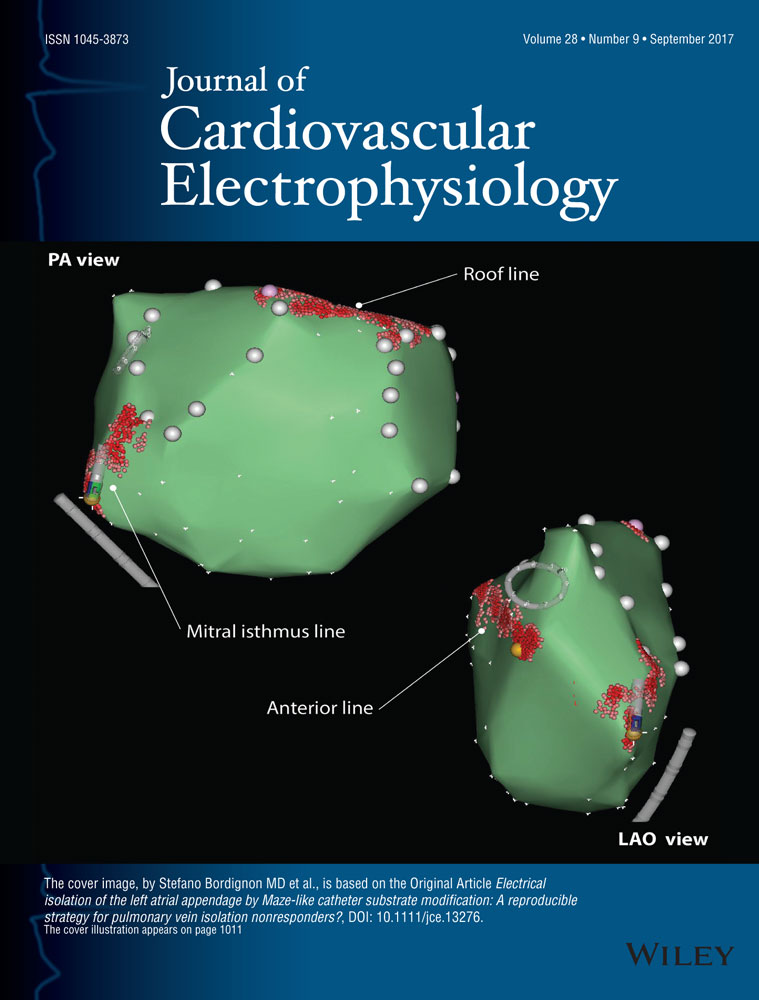Safety and feasibility of percutaneous skin closure using purse-string suture compared with compression bandage after pulmonary vein isolation
Prof. Thomas Neumann has received honoraria from Medtronic as an invited speaker and for advisory board meetings. Dr. Malte Kuniss has received honoraria from Medtronic as an invited speaker and for advisory board activities. Other authors: No disclosures.
Abstract
Introduction
This observational study was designed to analyze the safety and feasibility of percutaneous skin closure using a purse-string suture and compare it with the use of a compression bandage after pulmonary vein isolation.
Methods and results
A total of 407 patients undergoing pulmonary vein isolation (217 with radiofrequency and 190 with cryoballoon ablation) were treated with either purse-string sutures or compression bandages. The purse-string suture was applied after ablation before withdrawal of the sheaths. Patients were on bed rest for 6 hours prior to suture removal, which was accomplished 18–24 h after ablation. The compression bandage was applied after sheath withdrawal and was removed after 12 hours of bed rest. We analyzed the occurrence of any vascular or thromboembolic complication as well as hospital costs and hospital stay length after ablation.
The incidence of vascular complications after compression bandage was higher than after purse-string suture in the cryoballoon and radiofrequency group (P < 0.05, respectively). The hospital costs were lower and hospital stay was shorter in both radiofrequency (4.921 ± 3.145 vs. 5.802 ± 4.006 Euro; 2.34 ± 1.32 vs. 2.98 ± 1.57 days, P < 0.05) and cryoballoon groups (4.705 ± 3.091 vs. 5.661 ± 3.563 Euro; 2.14 ± 1.37 vs. 2.61 ± 1.55 days, P < 0.05) in patients treated with a purse-string suture.
Conclusions
Percutaneous skin closure with a purse-string suture has the clinical impact to reduce vascular complications, hospital costs, and hospital stay length after pulmonary vein isolation.




